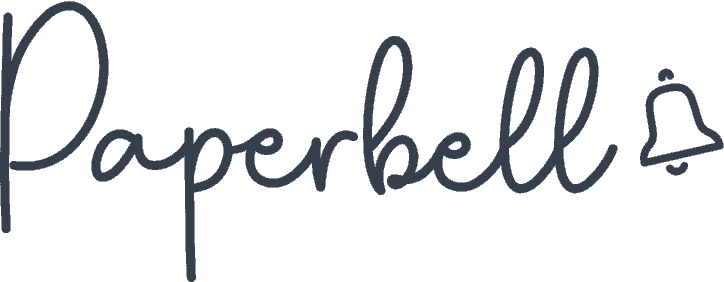Life coaching can be a fulfilling career that will not only help you build your own business but also help others overcome their biggest challenges and make lasting positive changes in their lives.
To run your first life coaching session successfully, you need a great structure and some preparation.
Here’s everything you need to know about planning, structuring, and running your sessions to leave a positive impact on your clients.
Define the Objective for the Session
The first step is to figure out the purpose of your session. Is it a standalone call or part of a larger coaching package designed to work toward a specific goal?
A standalone life coaching session will need to achieve a smaller outcome in less time. However, a call part of a signature program needs to take the client one step closer to a bigger outcome.
In both cases, you need to establish the objective of this individual session first before you can break it down.
How to Structure Your Life Coaching Sessions
Use this flow as your first coaching session template to facilitate your client’s progress and personal growth.
1. Establish Rapport
The first step of any call should be to establish rapport. How you’ll do this depends on how well you know the client.
For instance, is this your first time coaching them? Or is this one of several sessions you’ve already had with them?
If this is an existing coaching relationship, you can establish rapport by referencing past sessions with the client and asking them how they felt after the previous session. However, if this is your first session with them (other than the discovery session), you’ll have to find something else.
You can start by thanking them for trusting you and reassuring them that both of you will work together to get where they want to go.
2. Spend the First 5 to 10 Minutes on Accountability
If you’ve defined action steps in your previous meeting, you must hold your client accountable.
Did they follow through? If not, what held them back? Why did they feel stuck?
You can ask the following questions to help them take accountability:
- How did [action step] go since the last time we spoke?
- Did you run into any obstacles?
- What worked for you and what didn’t?
- Are you currently facing any roadblocks?
- What have you learned from these action steps?
About 5-10 minutes should be enough to cover this in a one-hour session.
3. Identify Today’s Focus
Next, you and your client need to figure out what they want to be coached on that day. If you’re in a coaching program with a predefined structure, you may already have a clear idea about this.
If not, ask your coachee a question like:
- What would make this a powerful conversation for you today?
- What would you like to focus on in today’s session?
- How do you feel about [previously defined goal] right now?
Agree on the focus of the call with your client to make sure you’re on the same page. You can’t solve every challenge for your client in a single session, so make sure to set reasonable expectations for the coaching journey within the time frame you have.
This will also inform what coaching tools you’ll need to focus on to make progress.
4. Reframe Your Client’s Challenges
Once you know what challenges you’re dealing with and what your goals are for this coaching session, take some time to dissect the issue and find ways to reframe it.
Help your client understand their situation and see their challenges from a different perspective. Separate what the objective events are from the meanings they might attach to them.
If this brings up some heavy feelings in them, acknowledge them and help them accept their emotions. Taking a moment to do this can help your coachee approach their issues with a clearer head to find solutions.
5. Walk Your Client Through Relevant Strategies
Identify possible solutions and strategies together to tackle the issues your client is facing. You can throw in suggestions of your own, but remember, you’re not there to save them; you’re there to guide and empower them.
Ask guiding questions to help your client come up with new ways to approach a problem, such as:
- How have you dealt with similar challenges in the past? What worked then?
- What else could you try?
- Is there a person who can help you with this issue?
- What resources or strengths could you leverage in this situation?
- How can you reframe this challenge into an opportunity?
This will not only help them progress with their objective but also develop self-reliance in the future.
6. Come up With an Action Plan
Build an action plan with your client that they can follow to make strides forward.
Define a specific time frame for the steps they commit to. This could be until the next section or, for example, within the next month.
Here are some guiding questions that will help you do that:
- What’s the smallest step you can take right now to move forward?
- What specific action can you commit to taking in relation to [goal]?
- By when are you going to complete this step?
- How will you know when you’ve made progress or achieved your goal?
Your client will need to be on board with the plan to act on it. Watch out for any hesitation on their end and address any resistance to moving forward. Adjust the size of their goals and the time frame to something they can say yes to.
Should You Always Follow a Coaching Call Structure?
You don’t have to structure your life coaching sessions to the minute. Leaving some wiggle room will help you stay flexible to address unforeseen issues and shift course to focus on what your client needs at that moment.
However, a clear coaching process will help you stay on track to make sure they walk away with tangible results. You can keep your session flow in front of you throughout the session to make sure you make the most of your time with your client.
If you want to dive deeper into coaching questions and processes, Coaching Questions: A Coach’s Guide to Powerful Asking Skills is a classic guide worth keeping at hand.
How to Prepare for Your Life Coaching Session
Like with everything in a coaching business, preparation is key. Take some time before your session to plan ahead so you can make it as efficient as possible.
If this is your first one with a coachee, send an intake form to them beforehand and ask them to fill it out by a specific time. This way, you’ll have a chance to learn more about them before you get on the call.
For regulars, review your session notes from previous calls to get a refresher on their progress. If the call is part of a package, look at the program outline to check the purpose of the upcoming session.
This will help you think through what coaching templates and tools may be helpful to bring to your next call.
What to Do Right After Your Life Coaching Sessions
You can reflect on how your session went by asking yourself:
- What did I learn from this call that I didn’t know beforehand?
- How can I better prepare next time and support my client?
- What coaching skills do I need to improve to serve them better?
Depending on your coaching agreement, you can also check in with your client before the next session about the actions they’ve committed to. If you have any resources that may help them with their specific issue, you can email some to them.
Manage Your Coaching Practice With Ease
There are several ways to conduct your life coaching sessions. This six-step process will help you get started with your client’s journey and adjust your coaching plan as you gain experience.
Managing your coaching practice and your sessions can take up a lot of time when you do it manually.
Paperbell can automate your payments, contracts, and schedule to save you time preparing for sessions. It also stores all your intake forms and session materials in one neat place.
Try Paperbell for free with your first client.
Editor’s Note: This post was originally published in May 2021 and has since been updated for accuracy.










